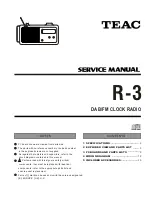
23 mm Transponder Reference Manual
25 July 1996
Page 10 of 22
5.2 Reader and System Design Impact
*
Ease of receiver and power function design and the optimization of performance due to
sequential power/read functions.
*
Low field strength for transponder charge, resulting in lower cost of the power function.
*
Optional performance and cost trade-offs by variation of:
interrogation speed by software down to 35 ms.
component selection to achieve different EMI performance levels.
5.3 System Performance and Functional Reliability Impact
*
Inherent EMI robustness and high system Signal/Noise ratio because:
A. The transponder emits 6..20 dB higher data signal (compared to conventional systems).
B. The powering phase is noise immune and the data transmission phase duration is typically
16 ms.
C. FSK and NRZ allow a high data rate (typically 9 kbit/s).
D. Modulation is direct carrier FSK which has inherent AM noise suppression.
*
Low reader power dissipation because of low charge field strength.
*
Low power consumption due to pulsed operation (=low peak power x low duty cycle).
*
Data telegram transmission is secured by 16 bit CRC-CCITT error detection protocol.
*
The receive time is short, because the transponder protocol always starts at the beginning of
the data stream. Therefore read repetitions are not necessary.
5.4 Other Quality Factors of the TIRIS Pulsed FM System
*
High and consistent transponder product quality and performance by automated high volume
manufacturing.
*
The direct FSK provides enhanced separation and better position-selective reading of adjacent
transponders compared to AM systems.
*
Product migration path concept from RO to R/W to Password protected and Multipage
transponders. The reader or system can be changed from RO to R/W by S/W change only.
*
TIRIS transponders are 100% tested according to the procedures of TI's Total Quality
Culture.
*
The reliability of TIRIS transponders is monitored through the following tests: temperature
and humidity, thermal shock, and operating life.








































